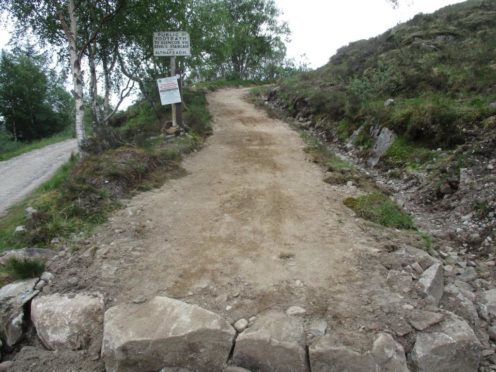The first phase of a project to improve part of the West Highland Way has been completed.
Part of the 96-mile walking route, on the old Military Road south of Kinlochleven, was eroding and becoming indistinct – but is now clearer and smoother with better drainage.
The West Highland Way is Scotland’s most popular long distance path with more than 35,000 people walking the whole length of it last year.
Survey figures in 2012 estimated that it generates nearly £16 million each year to businesses along the route.
This first phase of the work, from the north side of the infamous Devil’s Staircase to where the old Military Road meets the hydro track to the Blackwater Reservoir, cost £40,000 and was part funded by Highland Council and Scottish Natural Heritage.
The second phase will cost roughly the same and is expected to start in the autumn.
Highland Council appointed experienced mountain path builders Highland Conservation Ltd to carry out the work throughout May and June.
They used local stone material from under the vegetation, which was then carefully placed back, preventing quarried material being transported by helicopter at greater cost and carbon dioxide emissions.
The West Highland Way starts at Milngavie, north of Glasgow, passes through Loch Lomond and Trossachs National Park, over Rannoch Moor, into Glencoe and finishes in Fort William.
The improved section of the route is usually met by walkers on their fourth or fifth day.
The council’s senior long distance route officer, Jock MacGillivray, said: “I am very pleased with what the contractors have done. This type of work was done until very recently by hand and the machine operators have shown great skill and awareness of their environment.”
Chairman of the Lochaber Committee, councillor Andrew Baxter, described the completed works as great news for an area which is very much a year-round holiday destination.
